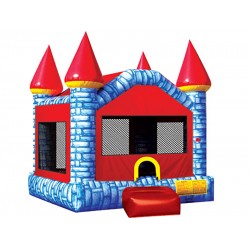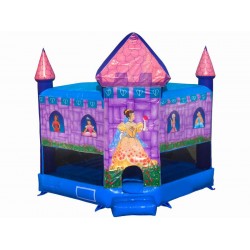What Are the Key Signs That an Inflatable Castle Needs Retirement?

Inflatable castles are a fun and popular choice for events, but they do have a finite lifespan. Knowing when it's time to retire your inflatable castle is crucial for ensuring safety and avoiding potential issues. Here are the key signs that an inflatable castle may need to be retired:
1. Frequent and Extensive Damage
Frequent or extensive damage can indicate that an inflatable castle is reaching the end of its useful life:
- Repeated Tears or Punctures: Multiple repairs or recurring issues with tears and punctures can compromise the structural integrity of the castle.
- Persistent Leaks: Constant air leaks that are difficult to repair may suggest significant wear and tear.
2. Severe Material Degradation
Material degradation can weaken the inflatable and make it unsafe:
- Fading or Brittle Fabric: Fabric that has become faded, brittle, or stiff may be an indicator of UV damage or aging.
- Visible Mold or Mildew: Persistent mold or mildew that cannot be removed may indicate that the material is deteriorating.
3. Structural Instability
Loss of structural integrity can affect the safety of the inflatable:
- Warped or Misshapen Areas: Significant warping or deformation of the inflatable can suggest internal damage or wear.
- Unstable or Sagging Sections: Sections that sag or show signs of instability during use can be a safety concern.
4. Safety Concerns
Safety is paramount, and certain issues can indicate that the inflatable is no longer safe for use:
- Ripped or Broken Safety Features: Damaged or non-functional safety features, such as netting or reinforced edges, can pose a risk to users.
- Inadequate Inflation: Difficulty maintaining proper inflation levels despite repairs can suggest underlying issues with the structure.
5. Age and Usage
The age and usage history of the inflatable can also be indicators of its need for retirement:
- Exceeded Lifespan: If the inflatable has exceeded its typical lifespan of 5 to 10 years and shows signs of wear, it may be time to retire it.
- High Frequency of Use: Frequent use over the years can lead to wear and tear that accumulates and affects the inflatable’s condition.
6. Manufacturer Recommendations
Following the manufacturer's guidelines is crucial:
- Warranty Limitations: If the inflatable is no longer covered by warranty and significant issues arise, it might be time to consider retirement.
- Guidance from Manufacturer: Consult the manufacturer’s recommendations for retirement based on the specific model and its condition.
Conclusion
Recognizing the key signs that an inflatable castle needs retirement—such as frequent and extensive damage, severe material degradation, structural instability, safety concerns, age, and manufacturer recommendations—can help ensure safety and prevent potential issues. By staying vigilant and proactive, you can make informed decisions about when to retire your inflatable castle and replace it with a new, safe, and enjoyable option.




Leave a Comment